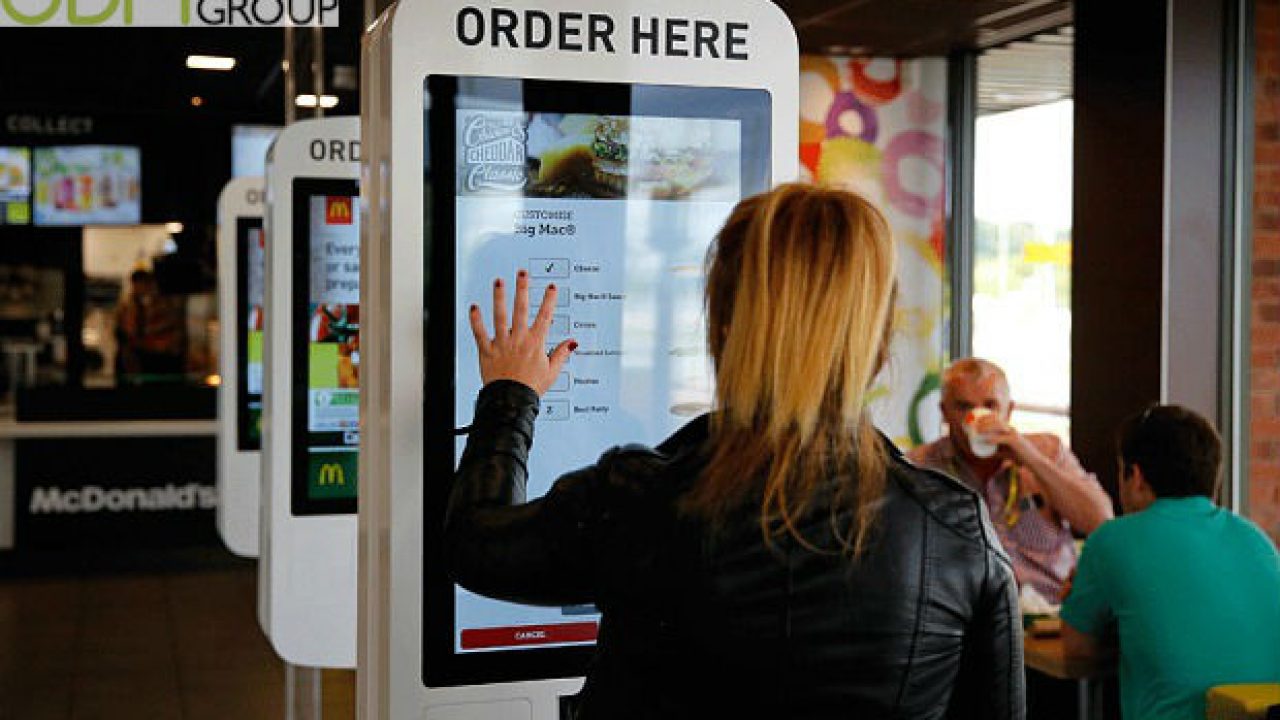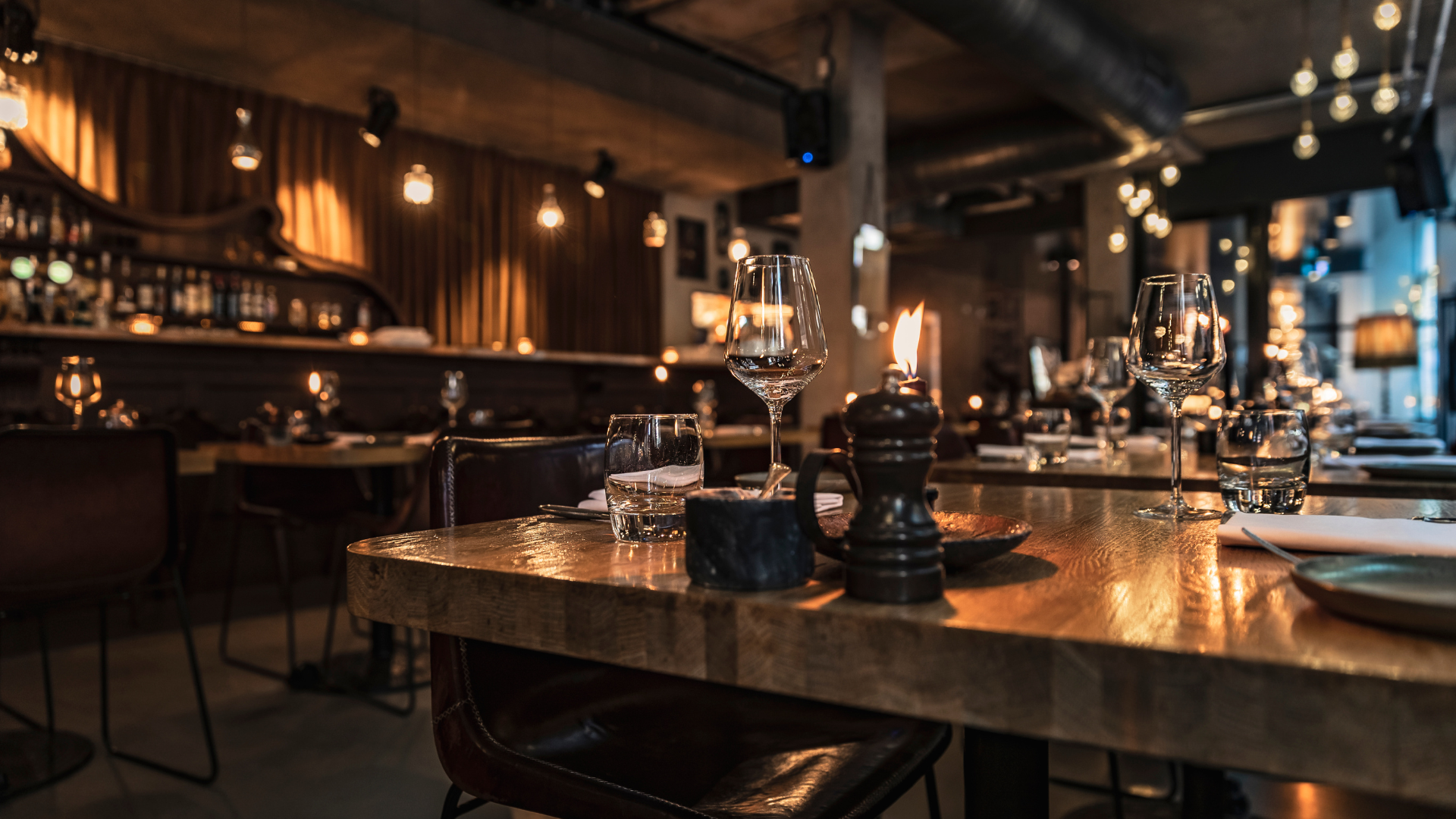After attracting an astounding 100 million users within two months of its launch, 2023 is shaping up to be the year of ChatGPT. However, while you might be familiar with ChatGPT and similar AI chatbots, you may not have considered how they can be harnessed to improve your marketing efforts for your restaurant.
In this post, we delve into the emerging world of these AI tools and figure out ways to maximise ChatGPT for your hospitality business.
What is ChatGPT?
ChatGPT (the GPT part stands for Generative Pre-Trained Transformer) is an AI chatbot created by Open AI (software company which was co-founded by Elon Musk in 2015, before he left three years later). Like most AI marketing tools, it was created to be a customer service chatbot, as found on a growing number of websites.
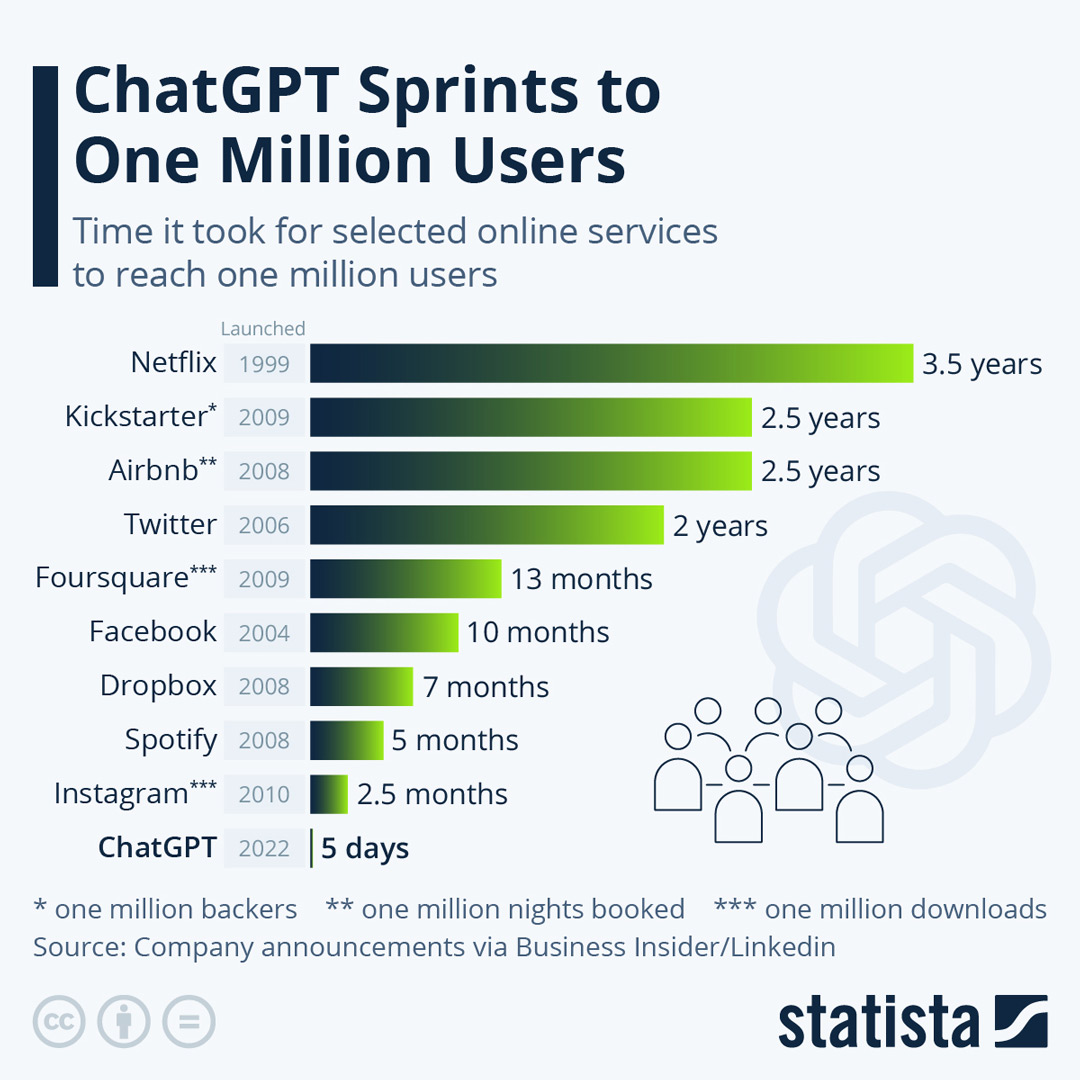
Because ChatGPT’s language model communicates conversationally, remembers user’s prompts, and generates natural answers, it’s responses are often indistinguishable from human ones, which makes it useful for much more than casual conversations.
How does ChatGPT work?
In simple terms, ChatGPT works through the user typing in a command, which is known as a prompt. ChatGPT then outputs a text-based reply that corresponds to the entered prompt. In other words, you type a question into ChatGPT, and it responds with an answer.
Now, to provide you with that answer, ChatGPT and similar AI chat bots need to be trained, i.e., fed lots of information (text, video, images or all of the above) and given rules that allow it to “make sense” of the data it’s processing.
Under the hood, ChatGPT breaks the data down into smaller chunks called “tokens” – these are essentially sequences of letters, words and numbers. ChatGPT was trained on around 500 billion tokens, enabling it to develop a neural network modelled after the human brain. This allows ChatGPT to learn the relationships between different words and concepts, and predict what should come next with incredible accuracy.
What can it actually do?
With such vast amounts of information under its disposal, ChatGPT can:
- Create product descriptions and tag lines
- Write blog posts, articles, and social media content
- Translate text from one language to another – or into multiple languages
- Write and debug computer code
- Write stories, songs, poems, etc
- Create lists of ideas or concepts
- Make recommendations based on its current knowledge
…and that’s only a fraction of its full capabilities!
What are the limitations of ChatGPT and current AI bots?
The main reason there’s so much excitement surrounding ChatGPT is that it almost sounds too good to be true. So much so, in fact, that there was a lot of speculation – and apprehension – about all the employees that ChatGPT could replace. AI chatbots have already proven a successful alternative to human customer service representatives, and now they’re poised to make copywriters, marketing executives, and even coders obsolete – what’s the catch?
Sure enough, despite their many benefits, AI tools aren’t without their limitations:
Words, not knowledge: ChatGPT can only provide answers based on the data on which it was trained – and only contextualises based on the statistical relationships between sequences of characters. As a result, it doesn’t know if its answer is correct and could easily misinform the user.
Responses are only as good as entered prompts: there’s a common phrase in the world of computing, “garbage in, garbage out (GIGO)”: if you enter bad or incomplete data into a computer, expect similar data in return. In the case of ChatGPT, the accuracy of its responses depend on the quality of prompts entered into it. Learning how to best structure prompts that produce the desired response can take a little time, which can frustrate users.
AI detection tools: because AI marketing tools automate content creation, the volume of produced content is poised to increase exponentially. They’ll be an information overload, and to handle the glut of suspiciously similar, AI-generated content, companies like Google and Microsoft are investing heavily in AI detection tools. Subsequently, you can’t rely exclusively on AI-generated content and still need human creativity and ingenuity.
7 ChatGPT prompt ideas to power up your restaurant’s marketing
Now, for the main course!
Turning our attention to some ChatGPT prompts, below are 7 fantastic ways it can help take your restaurant’s marketing to the next level. Before you start though, a word of advice:
Tips to get the most out of ChatGPT (or similar AI chatbots):
- As AI bots are trained on historical data, they usually have very limited, or non-existent, knowledge of the latest events
- For best results, make your prompts as specific as possible
- Because ChatGPT remembers your prompts, you can ask follow-up questions or request more details
- You can always ask the bot to generate a brand new answer to the same prompt
- Despite their advanced technology, AI bots may still produce inaccurate information
1. Generate ideas for a new dish or drink
Struggling to come up with ideas for a new menu item? Get ChatGPT to help you brainstorm. For the best suggestions, give it as much information as possible. E.g., “Come up with 5 ideas for a Mexican dish containing chicken and avocado”.
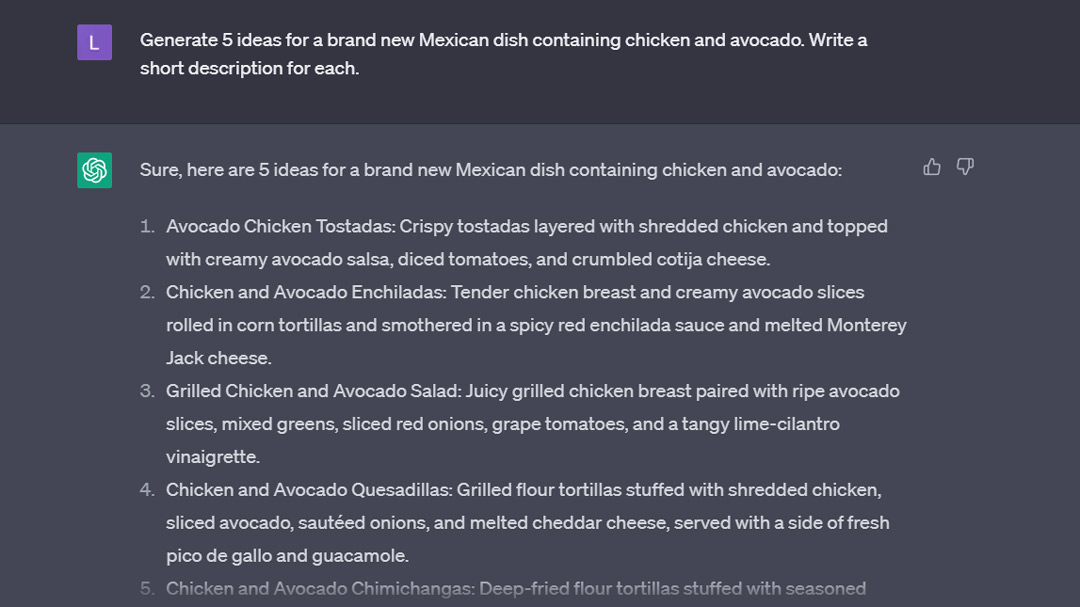
Example prompts:
- Create a [NUMBER] of name ideas for a [DISH TYPE] containing [INGREDIENTS]
- What [NUMBER] [CUISINE] dishes can be made with [INGREDIENTS]
2. Create restaurant name and tagline combinations
If you’re just getting started in the hospitality industry, ChatGPT is an excellent resource – with it being able to help you come up with names for your venue, and even corresponding taglines! For instance, “come up with 10 new restaurant names for a Vietnamese and Mexican fusion restaurant“.
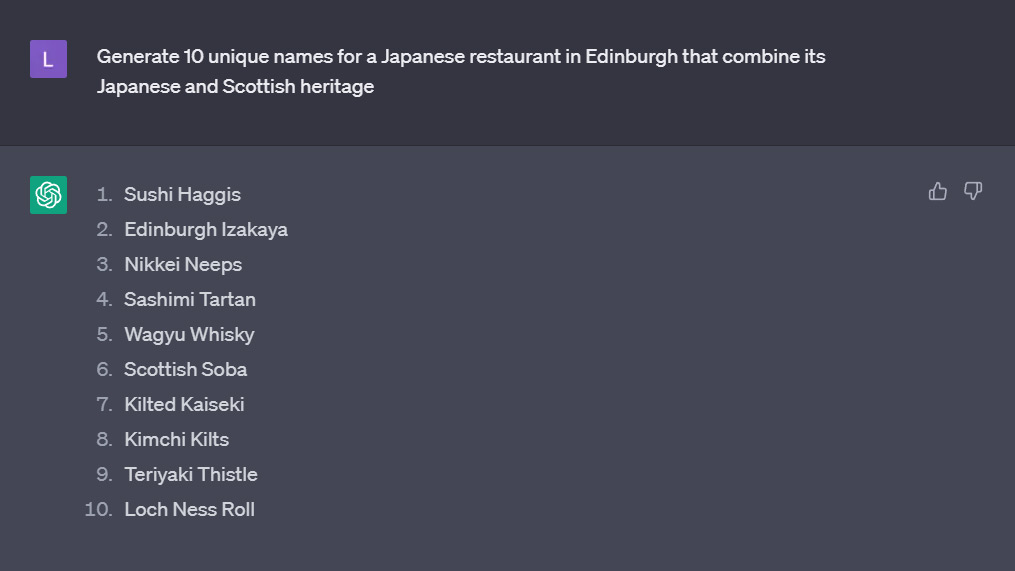
Example prompts:
- Come up with [NUMBER] creative names for a brand new [CUISINE] restaurant
- Generate [NUMBER] taglines for a [CUISINE] restaurant up to [NUMBER] words long
- How would you name a [CUISINE] venue serving [DISH TYPES]? Give me [NUMBER] ideas
- Generate [NUMBER] name and tagline combinations for a [VENUE TYPE] serving [CUISINE] food
3. Create an appetising description for a menu dish
Similarly, ChatGPT can help generate tantalising descriptions for new menu items, Again, the more detail you input, the better the response. E.g., “create a 30-word description for a strawberry and mint cocktail called ‘the mintberry mojito’”.
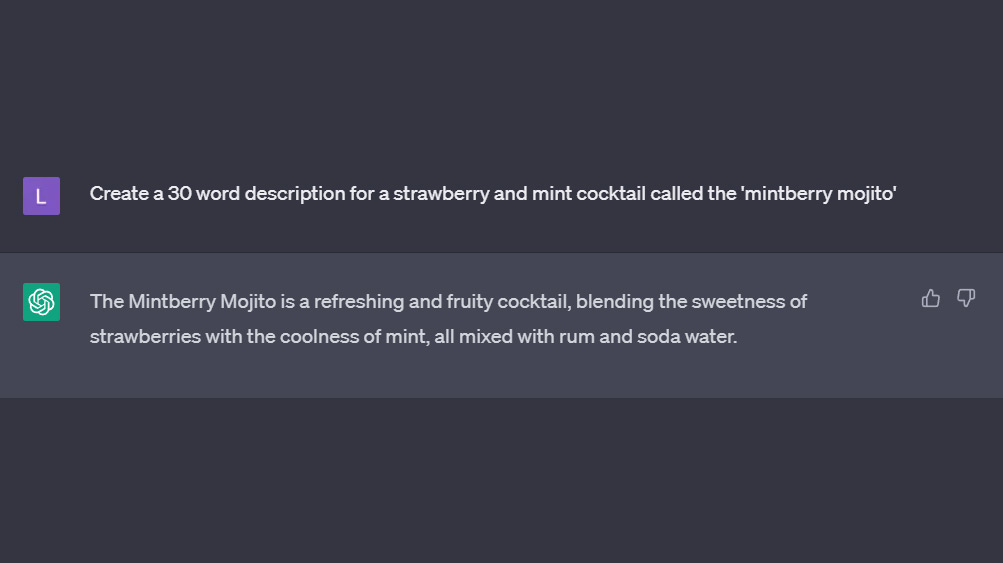
Example prompts:
- Create a [NUMBER] word description for a [DISH TYPE] containing [INGREDIENTS]
- Write a short description for a [DISH NAME], which contains [INGREDIENTS]
Want to create your very own branded website for free? Register now and create your ordering page in a matter of minutes!
Register for free today!
4. Generate unique marketing ideas
Because it’s been fed with such a colossal library of information, ChatGPT is an excellent creative tool. Its enhanced ability to understand different concepts means it can generate original ideas based on this knowledge.
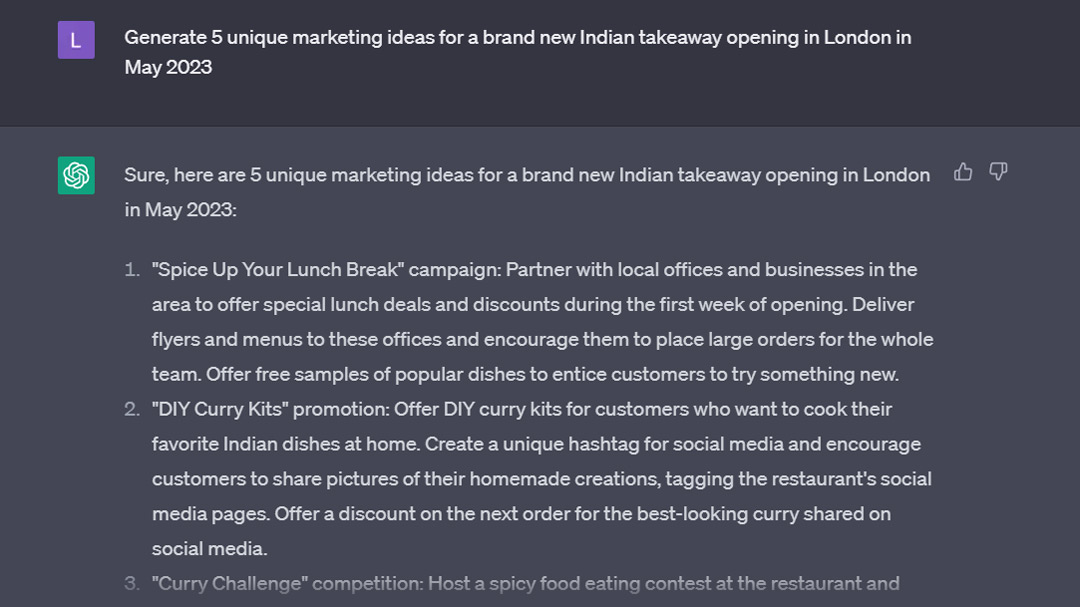
Example prompts:
- Generate [NUMBER] marketing ideas for [BUSINESS TYPE]
- How can I promote [BUSINESS TYPE] using [MARKETING CHANNEL]?
- How to promote [DISH TYPE] among [YOUR TARGET MARKET]
5. Come up with food and beverage pairings
Devising new food and drink pairings is a simple yet effective way to freshen up your menu. Not to mention, food and drink combos make for great special offers. Naturally, ChatGPT can help you with this, too!
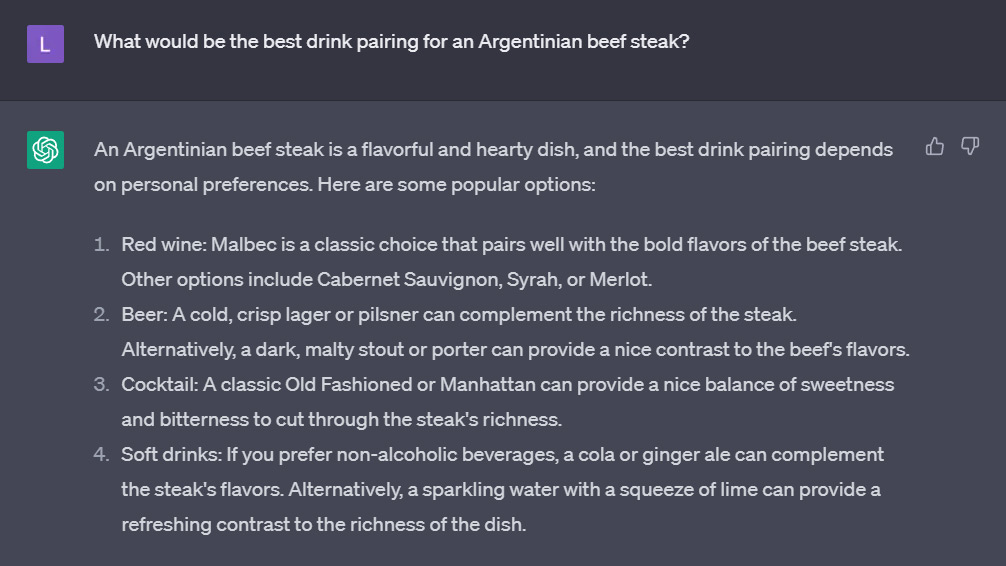
Example prompts:
- Create [NUMBER] food and drink pairings based on [CUISINE]
- What wines go well with [DISH NAME]?
- Recommend [NUMBER] cocktails for [DISH TYPE]
6. Create a business plan for a new hospitality venue
Writing a business plan for a brand new venue can be tedious, but ChatGPT can give you a head start by generating a basic template, complete with market analysis and financial projections. Remember, you can always ask it follow-up questions to elaborate on any specific point – the more specific the prompt, the more accurate results you can expect in return.
If you’re just starting out your entrepreneurial journey, ChatGPT can also be a great learning resource – you could ask it to show you how to create financial projections, marketing strategies, and more.
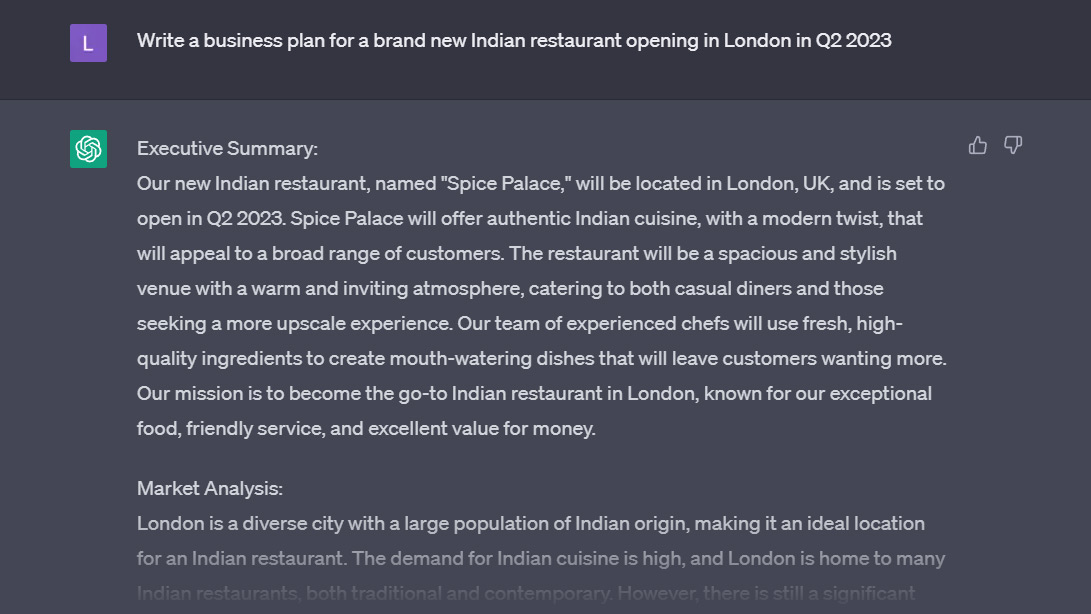
Example prompts:
- Write a business plan for a [CUISINE] restaurant opening in [LOCATION]
- Create a marketing strategy document for [VENUE TYPE] offering [CUISINE]
- Show me how to create financial projections for a [BUSINESS TYPE]
7. Generate copy for marketing campaigns
Whether for email, social media, or flyers and posters, ChatGPT will help you quickly create marketing materials that capture the attention of your target customers. Be sure to tell ChatGPT what the copy is for and how many words you need, such as, “Create a 100-word email promoting my restaurant’s Valentine’s event.”
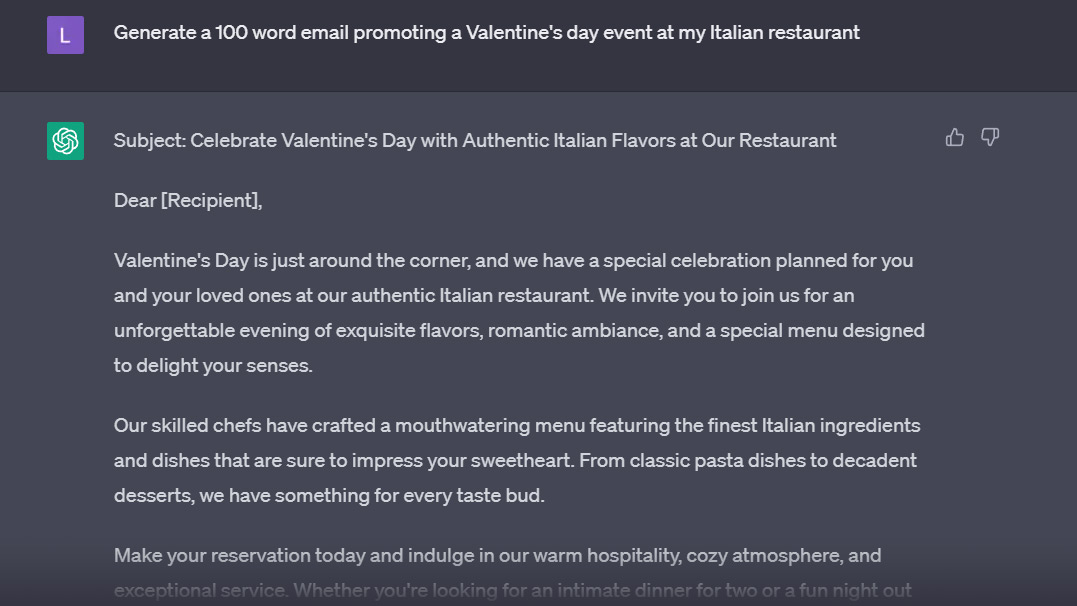
Example prompts:
- Generate a [NUMBER] word email promoting [EVENT TYPE] at my [CUISINE] restaurant
- Write a [NUMBER] word social media post about [PROMOTION NAME] promotion at [VENUE NAME]
- Write a [NUMBER] word blog post about [TOPIC]. Make sure to mention [SUB-TOPICS]
Final thoughts
Once you’ve taken advantage of ChatGPT’s powerful functionality to enhance your marketing campaigns, you can capitalise on your expanded online presence with Grafterr’s online ordering platform. Now your customers will be able to make reservations online, as well as order menu items for delivery. Better still, you can add Grafterr’s online ordering to your existing website – or create a new one with our simple, interactive website builder.
Plus, you can improve the experience for customers within your restaurant with Grafterr’s QR code ordering system. This enables you to place QR codes on your tables so customers can order at their own convenience from your very own digital menu.



